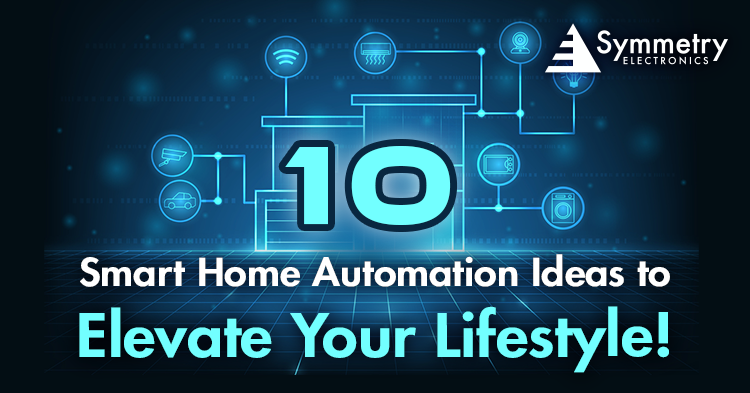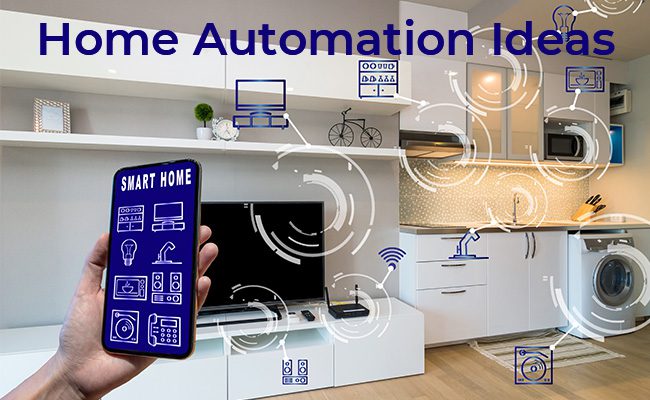Smart home wiring is crucial for connecting and controlling various devices and systems within a home. It involves the installation of structured wiring to facilitate communication and integration of smart home technologies.
This includes connecting devices such as security systems, lighting, thermostats, and entertainment systems to a central control hub. Creating a smart home wiring infrastructure enables homeowners to manage and monitor their devices remotely, enhancing convenience, efficiency, and security. With a well-planned wiring setup, homeowners can optimize their smart home experience and future-proof their properties for upcoming advancements in home automation technology.
Proper installation and organization of smart home wiring are essential for ensuring seamless connectivity and functionality throughout the home.

Credit: www.symmetryelectronics.com
Preparing For Smart Home Wiring
Understanding Your Home’s Electrical System
In preparing for smart home wiring, it is crucial to first understand your home’s electrical system. Analyze the existing wiring, circuits, and connections to ensure they can support the additional load introduced by smart home devices.
Assessing Your Automation Needs
Before diving into the smart home wiring process, it’s essential to assess your automation needs. Identify the areas of your home where automation and smart devices will be deployed. Consider different aspects such as lighting, security, heating, and entertainment to determine the extent of wiring required.
Essentials Of Smart Home Wiring
Smart home wiring is an essential component of creating a modern, connected home. From choosing the right wiring infrastructure to installing smart switches and outlets and setting up a smart home hub, a well-planned wiring system can lay the foundation for a seamless, integrated smart home experience. In this section, we’ll delve into the essentials of smart home wiring, providing valuable insights into setting up a cutting-edge smart home infrastructure.
Choosing The Right Wiring Infrastructure
While planning for a smart home, it’s crucial to select the appropriate wiring infrastructure that can accommodate the diverse range of smart devices and applications. Structured wiring, which integrates all of the home’s communications, audio, video, and data wiring into a single, organized system, is a fundamental choice for ensuring the scalability and reliability of smart home technology.
Smart Switches And Outlets
Incorporating smart switches and outlets into the wiring system enables remote control and automation of lighting, appliances, and other electrical devices. Upgrading to smart switches and outlets allows homeowners to improve energy efficiency and enhance convenience through voice commands or smartphone apps.
Installing A Smart Home Hub
Implementing a smart home hub serves as the central control unit for an array of smart devices, facilitating seamless communication and coordination. Through the installation of a smart home hub, such as popular options like SmartThings or Apple HomeKit, users can effortlessly monitor and manage various connected devices, creating a cohesive smart home ecosystem.
Integration And Control
Smart home wiring enables seamless integration and control of various devices within the house. From lighting and thermostats to security systems and entertainment, it brings convenience and efficiency to modern living. With smart home wiring, homeowners can easily manage and customize their home environment through centralized systems.
Connecting And Synchronizing Devices
When it comes to creating a smart home, one of the key steps is connecting and synchronizing all your devices. Integration plays a pivotal role in allowing your smart devices to communicate with each other and work seamlessly together. This integration and control aspect is what truly transforms a collection of gadgets into a smart home.
One of the first things you’ll need to do is ensure that all your devices are compatible and can be connected to a central hub or control system. This central hub acts as the brain of your smart home, enabling you to control and monitor your devices from a single interface.
Setting up this integration involves linking your devices to the hub, which typically involves connecting them to your home’s Wi-Fi network. Once connected, you can begin synchronizing your devices, allowing them to share information and collaborate in a way that enhances your overall smart home experience.
A common way to synchronize devices in a smart home is through a process called automation. With automation, you can create custom rules and routines that dictate how your devices interact with each other based on specific triggers or events. For example, you could set your smart lights to turn on automatically when your smart door lock detects that you’ve arrived home.
Setting Up Voice Control And Smart Assistants
Another integral aspect of controlling a smart home is setting up voice control and utilizing smart assistants. This technology allows you to interact with your devices and control them using simple voice commands.
There are various smart assistants available, such as Amazon Alexa, Google Assistant, and Apple Siri, each offering its own unique set of features and capabilities. These smart assistants can be integrated with your smart home hub, enabling you to control your devices with just your voice.
To set up voice control, you’ll need to ensure that your devices are compatible with the smart assistant of your choice. This typically involves linking your smart assistant account to your smart home hub and granting the necessary permissions.
Once set up, you can start using voice commands to perform a wide range of tasks, from controlling lights and adjusting thermostats to playing music and even ordering groceries. The convenience and hands-free nature of voice control makes it a popular choice among smart home enthusiasts.

Credit: reolink.com
Advanced Features And Customizations
When it comes to smart home wiring, the possibilities for advanced features and customizations are endless. From enhancing home security and surveillance to managing energy consumption and automating home entertainment systems, there are numerous ways to tailor your smart home experience to your specific needs and preferences.
Home Security And Surveillance
For many homeowners, having a safe and secure home is of utmost importance. With smart home wiring, you can integrate advanced security systems that provide you with peace of mind. Surveillance cameras equipped with motion sensors can be strategically placed around your property, allowing you to monitor activities in and around your home. These cameras can be accessed remotely through your smartphone or tablet, giving you real-time information about what’s happening even when you’re away.
Energy Management
In today’s world, energy efficiency is a crucial consideration. Smart home wiring allows you to monitor and control your energy consumption with ease. By installing smart switches and outlets, you can automate the process of turning off lights, appliances, and electronics when they’re not in use. Additionally, you can set up energy-saving schedules that adjust the temperature of your home or turn off unnecessary appliances when you’re not home. This not only reduces your environmental impact but also helps you save on your energy bills.
Automating Home Entertainment Systems
Gone are the days of manually operating each component of your home entertainment system. With smart home wiring, you can integrate all your devices and control them seamlessly from a single source. By programming customized scenes or using voice commands, you can start your favorite movie or playlist, adjust the volume, dim the lights, and even control your window blinds. This level of automation not only enhances your entertainment experience but also adds convenience to your daily life.
Frequently Asked Questions Of Smart Home Wiring
How Does Smart Home Wiring Work?
Smart home wiring involves connecting various devices and systems in a home to a central control hub. This allows homeowners to control and automate different aspects of their home, such as lighting, temperature, security, and entertainment, through one interface.
What Are The Benefits Of Smart Home Wiring?
Smart home wiring offers several benefits, including increased convenience, energy efficiency, and enhanced security. By connecting different devices, homeowners can control them remotely, save on energy costs, and monitor their home’s security from anywhere.
Can I Install Smart Home Wiring In An Existing Home?
Yes, smart home wiring can be installed in an existing home. While it might require some modifications to the electrical system, it is possible to retrofit smart technology into an older home. Consult with a professional to determine the specific requirements for your home.
What Devices Can Be Connected Through Smart Home Wiring?
A wide range of devices can be connected through smart home wiring, including lighting systems, thermostats, security cameras, door locks, entertainment systems, and kitchen appliances. Many of these devices can be controlled remotely using a smartphone or a voice-assistant device.
Conclusion
Smart home wiring is an essential component in creating a modern, efficient, and convenient living space. With its ability to streamline and integrate various systems, such as lighting, security, and entertainment, smart home wiring offers endless possibilities for customization and control.
By connecting and automating devices, homeowners can enjoy a seamless and personalized lifestyle experience. Make the most of technology advancements and invest in smart home wiring to elevate your living space to the next level.

I am a technology writer and blogger with 17 years of experience in the fields of information technology, artificial intelligence, cyber security, automated systems, and the latest technology trends.

